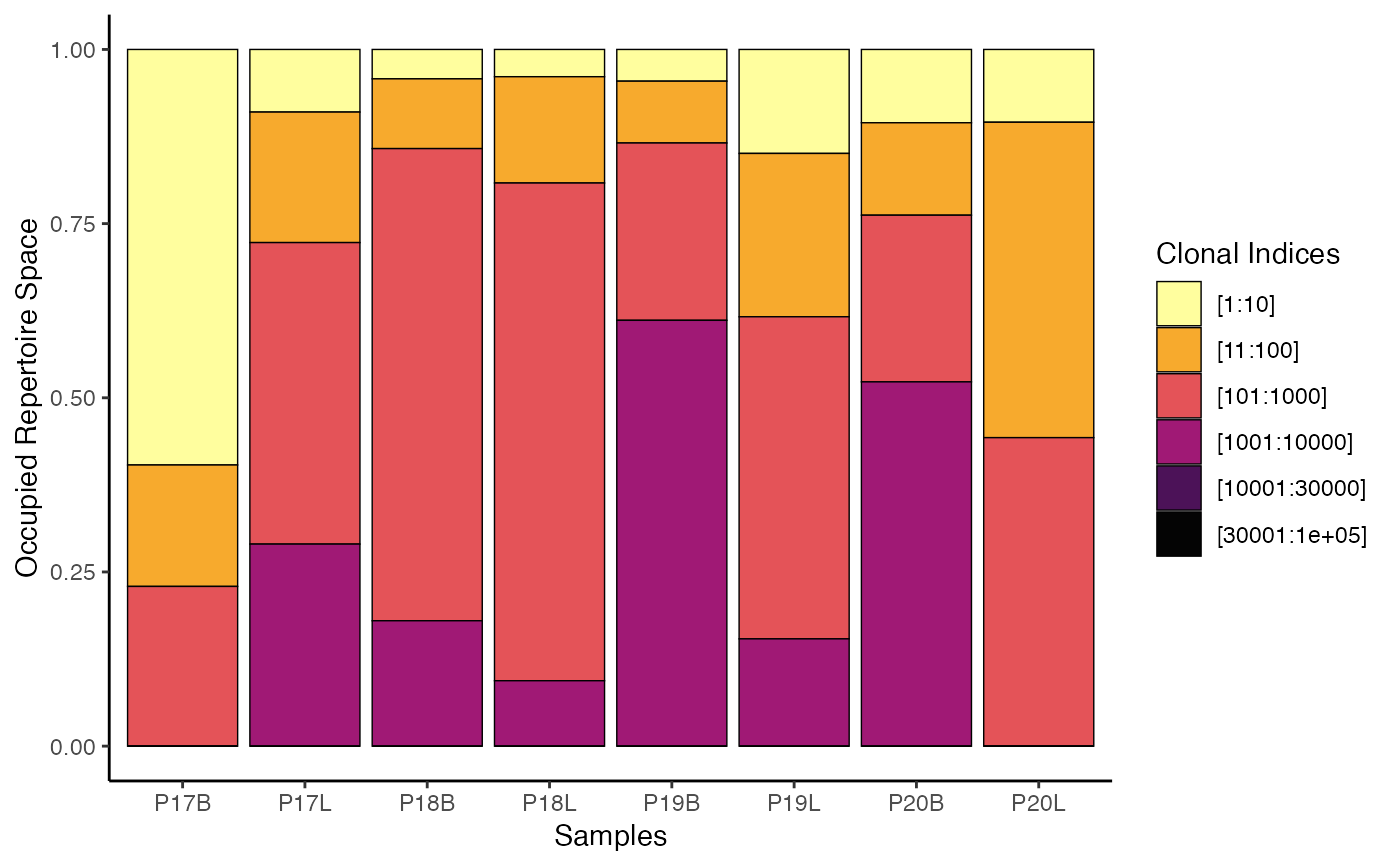This function calculates the relative clonal space occupied by the
clones. The grouping of these clones is based on the parameter
clonalSplit, at default, clonalSplit will group the clones
into bins of 1:10, 11:100, 101:1001, etc. To adjust the clones
selected, change the numbers in the variable split. If a matrix output
for the data is preferred, set exportTable = TRUE.
clonalProportion(
input.data,
clonalSplit = c(10, 100, 1000, 10000, 30000, 1e+05),
cloneCall = "strict",
chain = "both",
group.by = NULL,
order.by = NULL,
exportTable = FALSE,
palette = "inferno",
...
)Arguments
- input.data
The product of
combineTCR(),combineBCR(), orcombineExpression().- clonalSplit
The cut points for the specific clones, default = c(10, 100, 1000, 10000, 30000, 1e+05)
- cloneCall
Defines the clonal sequence grouping. Accepted values are:
gene(VDJC genes),nt(CDR3 nucleotide sequence),aa(CDR3 amino acid sequence), orstrict(VDJC + nt). A custom column header can also be used.- chain
The TCR/BCR chain to use. Use
bothto include both chains (e.g., TRA/TRB). Accepted values:TRA,TRB,TRG,TRD,IGH,IGL(for both light chains),both.- group.by
A column header in the metadata or lists to group the analysis by (e.g., "sample", "treatment"). If
NULL, data will be analyzed by list element or active identity in the case of single-cell objects.- order.by
A character vector defining the desired order of elements of the
group.byvariable. Alternatively, usealphanumericto sort groups automatically.- exportTable
If
TRUE, returns a data frame or matrix of the results instead of a plot.- palette
Colors to use in visualization - input any hcl.pals
- ...
Additional arguments passed to the ggplot theme
Value
A ggplot object dividing space occupied by ranks of clones or a
data.frame if exportTable = TRUE.
Examples
# Making combined contig data
combined <- combineTCR(contig_list,
samples = c("P17B", "P17L", "P18B", "P18L",
"P19B","P19L", "P20B", "P20L"))
# Using clonalProportion()
clonalProportion(combined, cloneCall = "gene")
